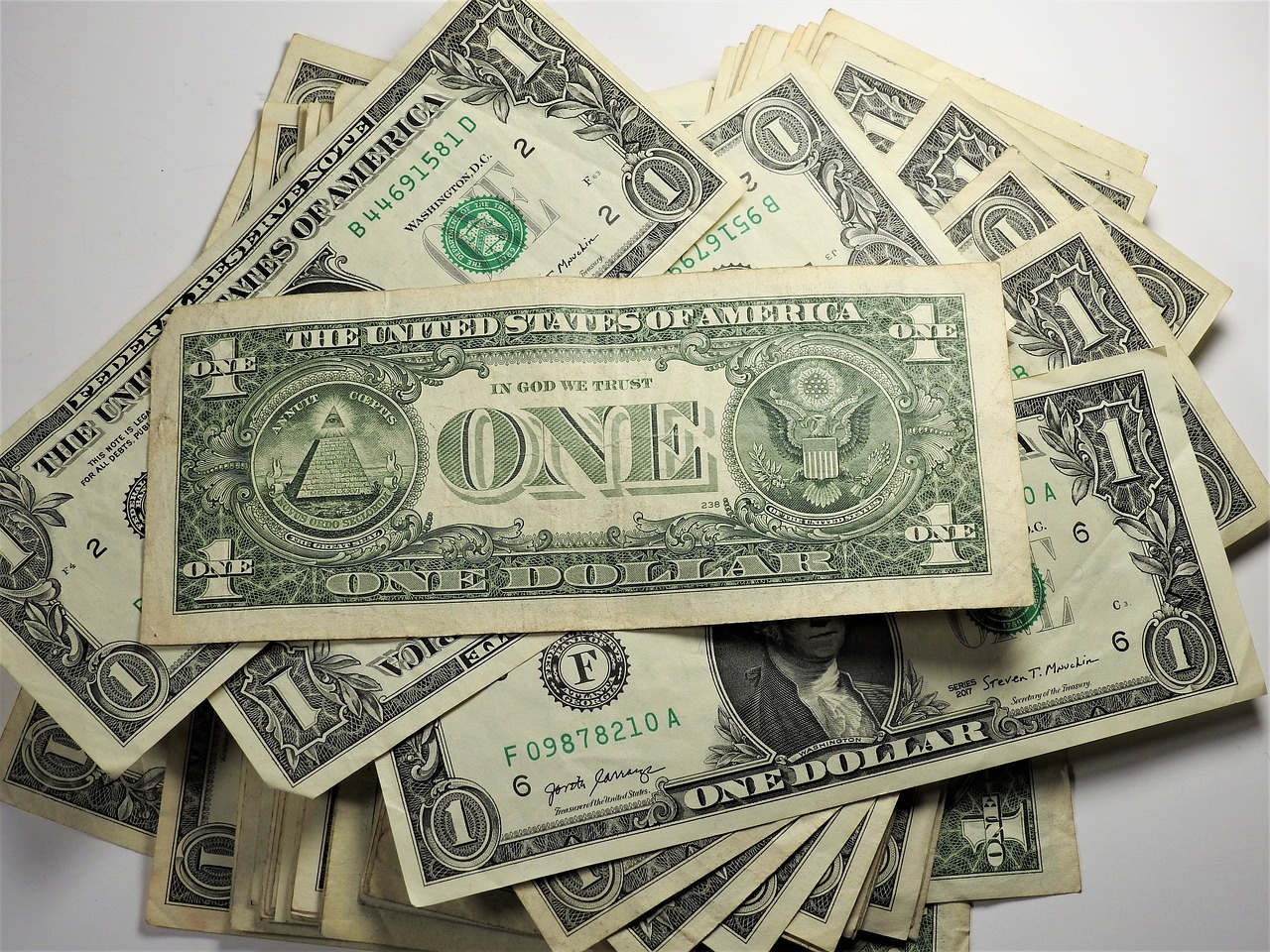The U.S. dollar slipped from its two-month high after signs of weakness in the labor market increased speculation about potential Federal Reserve rate cuts. Despite this, the dollar remained on track for its second consecutive weekly advance, supported by unexpectedly strong payroll figures from the previous week.
Dollar Performance Amid Fed Rate Cut Speculation
On Friday, the dollar showed resilience, driven by traders adjusting their expectations for the Fed’s next move. Following last week's robust payroll report, traders reduced bets on a half-percentage-point rate cut at the upcoming Federal Reserve meeting, favoring a more cautious stance.
However, Thursday's surge in initial jobless claims sparked concerns, counterbalanced by a simultaneous rise in the Consumer Price Index (CPI). This CPI uptick reminded investors that the Fed might still need to maintain restrictive monetary policies to curb inflation.
According to the CME Group's FedWatch Tool, the odds of a quarter-point Fed rate cut at the November 7 meeting rose to 83.3%, up from 80.3% the previous day. A week earlier, traders had priced in a 32.1% chance of a half-point cut and a 67.9% chance of a quarter-point reduction.
U.S. Treasury Yields and Dollar Index Trends
The yield on the two-year U.S. Treasury note, a key indicator of interest rate expectations, dropped to 3.9531% early on Friday, placing further pressure on the dollar. The U.S. dollar index, which tracks the greenback against six major currencies, was steady at 102.84 by 0111 GMT, down 0.3% from Thursday’s high of 103.17, which marked the highest level since August 15. For the week, the index is set to gain 0.39%, following the previous week’s significant 2.06% surge.
Global Market Reactions to Fed Policy and Inflation Data
While the Federal Reserve has shifted its focus toward full employment, investors closely monitored the latest CPI data to confirm whether inflation was truly moderating. According to Tapas Strickland, head of market economics at National Australia Bank, "The CPI result does not significantly alter the narrative of moderating inflation and supports the expectation that the Fed will return to a more neutral policy stance."
Fed officials remain divided in their views on rate cuts. Chicago Fed President Austan Goolsbee indicated that the majority of policymakers expect rates to "gradually decrease" from current levels, while Atlanta Fed President Raphael Bostic expressed openness to skipping a rate cut in November.
Currency Movements: Yen, Euro, and Australian Dollar
In currency markets, the dollar gained 0.06% against the yen, reaching 148.68, moving back towards Thursday’s high of 149.58, a level last seen in early August. The euro held steady at $1.09365, recovering from its two-month low of $1.090025 overnight. Meanwhile, the Australian dollar remained firm at $0.67395 after rebounding from Thursday’s low of $0.6702, its weakest point since mid-September.
Australia's currency has been highly sensitive to shifts in economic expectations from its largest trading partner, China. A news conference on fiscal policy by China’s finance ministry, scheduled for Saturday, could provide further direction for the Australian dollar.
Conclusion
As market participants continue to analyze U.S. labor market data and inflation trends, speculation around Federal Reserve rate cuts remains at the forefront. The dollar’s performance against global currencies, coupled with shifts in Treasury yields, signals ongoing volatility. Investors will be watching closely for further updates on economic policies from both the U.S. and key global players like China.



 U.S. Stock Futures Slip After CPI-Fueled Rally as Markets Weigh Economic Uncertainty
U.S. Stock Futures Slip After CPI-Fueled Rally as Markets Weigh Economic Uncertainty  New Zealand Business Confidence Hits 30-Year High as Economic Outlook Improves
New Zealand Business Confidence Hits 30-Year High as Economic Outlook Improves  Asian Currencies Slip as Dollar Strengthens; Indian Rupee Rebounds on Intervention Hopes
Asian Currencies Slip as Dollar Strengthens; Indian Rupee Rebounds on Intervention Hopes  Chinese Robotaxi Stocks Rally as Tesla Boosts Autonomous Driving Optimism
Chinese Robotaxi Stocks Rally as Tesla Boosts Autonomous Driving Optimism  Singapore Growth Outlook Brightens for 2025 as Economists Flag AI and Geopolitical Risks
Singapore Growth Outlook Brightens for 2025 as Economists Flag AI and Geopolitical Risks  Oil Prices Rebound as Trump Orders Blockade of Sanctioned Venezuelan Tankers
Oil Prices Rebound as Trump Orders Blockade of Sanctioned Venezuelan Tankers  BOJ Poised for Historic Rate Hike as Japan Signals Shift Toward Monetary Normalization
BOJ Poised for Historic Rate Hike as Japan Signals Shift Toward Monetary Normalization  Oil Prices Climb on Venezuela Blockade, Russia Sanctions Fears, and Supply Risks
Oil Prices Climb on Venezuela Blockade, Russia Sanctions Fears, and Supply Risks  Dollar Holds Firm Ahead of Global Central Bank Decisions as Yen, Sterling and Euro React
Dollar Holds Firm Ahead of Global Central Bank Decisions as Yen, Sterling and Euro React  Canada Signals Delay in US Tariff Deal as Talks Shift to USMCA Review
Canada Signals Delay in US Tariff Deal as Talks Shift to USMCA Review  Yen Near Lows as Markets Await Bank of Japan Rate Decision, Euro Slips After ECB Signals Caution
Yen Near Lows as Markets Await Bank of Japan Rate Decision, Euro Slips After ECB Signals Caution  Asian Stocks Slide as AI Spending Fears and Global Central Bank Decisions Weigh on Markets
Asian Stocks Slide as AI Spending Fears and Global Central Bank Decisions Weigh on Markets  Oil Prices Steady in Asia but Headed for Weekly Loss on Supply Glut Concerns
Oil Prices Steady in Asia but Headed for Weekly Loss on Supply Glut Concerns  Gold and Silver Prices Dip as Markets Await Key U.S. Economic Data
Gold and Silver Prices Dip as Markets Await Key U.S. Economic Data  Asian Fund Managers Turn More Optimistic on Growth but Curb Equity Return Expectations: BofA Survey
Asian Fund Managers Turn More Optimistic on Growth but Curb Equity Return Expectations: BofA Survey  Bank of Korea Downplays Liquidity’s Role in Weak Won and Housing Price Surge
Bank of Korea Downplays Liquidity’s Role in Weak Won and Housing Price Surge  Asian Currencies Trade Sideways as Dollar Weakens Ahead of Key U.S. Data
Asian Currencies Trade Sideways as Dollar Weakens Ahead of Key U.S. Data 

























